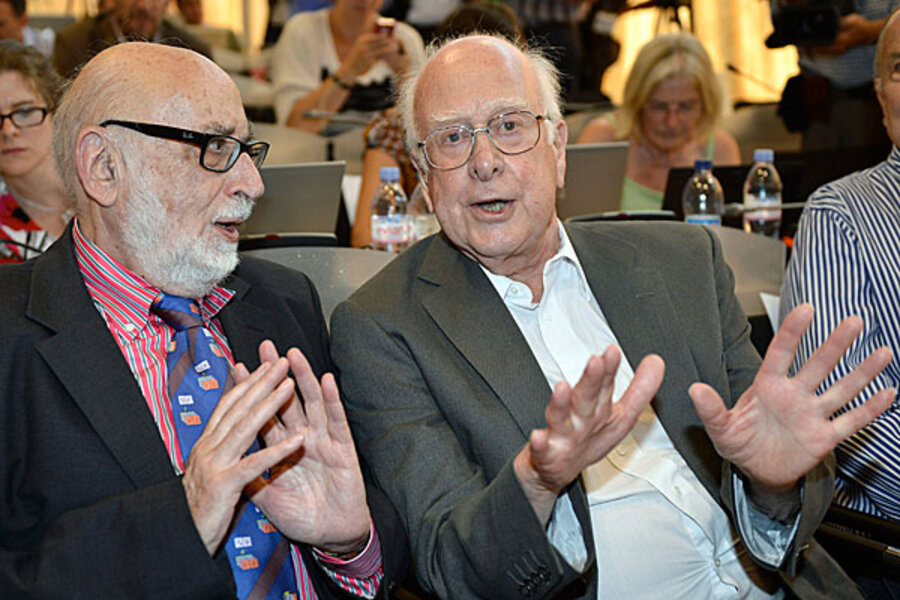Higgs boson discovery lands 2013 Nobel Prize for two physicists
Loading...
| Stockholm
Francois Englert of Belgium and Peter Higgs of Britain won the 2013 Nobel Prize in physics on Tuesday for their theoretical discoveries on how subatomic particles acquire mass.
Their theories are key to explaining the building blocks of matter and the origins of the universe. They were confirmed last year by the discovery of the so-called Higgs particle, also known as the Higgs boson, at CERN, the Geneva-based European Organization for Nuclear Research, the Royal Swedish Academy of Sciences said.
The announcement, which was widely expected, was delayed by one hour, which is highly unusual. The academy gave no immediate reason, other than saying on Twitter that it was "still in session" at the original announcement time. The academy decides the winners in a majority vote on the day of the announcement.
"I am overwhelmed to receive this award and thank the Royal Swedish Academy," Higgs said in a statement released by the University of Edinburgh. "I hope this recognition of fundamental science will help raise awareness of the value of blue-sky research."
Staffan Normark, the permanent secretary of the academy, said the academy had tried to reach Higgs on Tuesday but "all the numbers we tried he did not answer." He wouldn't say if that's why the announcement was delayed.
By just awarding the men behind the theoretical discovery of the particle, the prize committee avoided the tricky issue of picking someone at the CERN laboratory in Geneva to share the award. Thousands of scientists were involved in the experiments that confirmed the particle's existence in experiments last year.
The Nobel award can only be split by three people.
Englert and Higgs theorized about the existence of the particle in the 1960s to provide an answer to a riddle: why matter has mass. The tiny particle, they believed, acts like molasses on snow — causing other basic building blocks of nature to stick together, slow down and form atoms.
But decades would pass before scientists at CERN were able to confirm its existence in July 2012. To find it, they had to build a $10 billion collider in a 17-mile (27-kilometer) tunnel beneath the Swiss-French border.
"I'm thrilled that this year's Nobel Prize has gone to particle physics," said CERN Director General Rolf Heuer. He said the discovery of the particle at CERN last year "marks the culmination of decades of intellectual effort by many people around the world."
Finding the particle — often referred to as the "God particle" — required teams of thousands of scientists and mountains of data from trillions of colliding protons in the world's biggest atom smasher — CERN's Large Hadron Collider. The device produces energies simulating those 1 trillionth to 2 trillionths of a second after the Big Bang.
Only about one collision per trillion will produce one of the Higgs bosons in the collider, and it took CERN some time after the discovery of a new "Higgs-like" boson to decide that the particle was, in fact, very much like the Higgs boson expected in the original formulation, rather than a kind of variant.
The physics prize was the second of this year's Nobel awards to be announced. On Monday, the Nobel Prize in medicine was given to American scientists James Rothman, Randy Schekman and Thomas Sudhof for discoveries about how key substances are moved around within cells.
The prizes, established by Swedish industrialist and Alfred Nobel, will be handed out on Dec. 10 — the anniversary of his death in 1896. Each prize is worth 8 million Swedish kronor ($1.2 million).
Copyright 2013 The Associated Press. All rights reserved. This material may not be published, broadcast, rewritten or redistributed.







